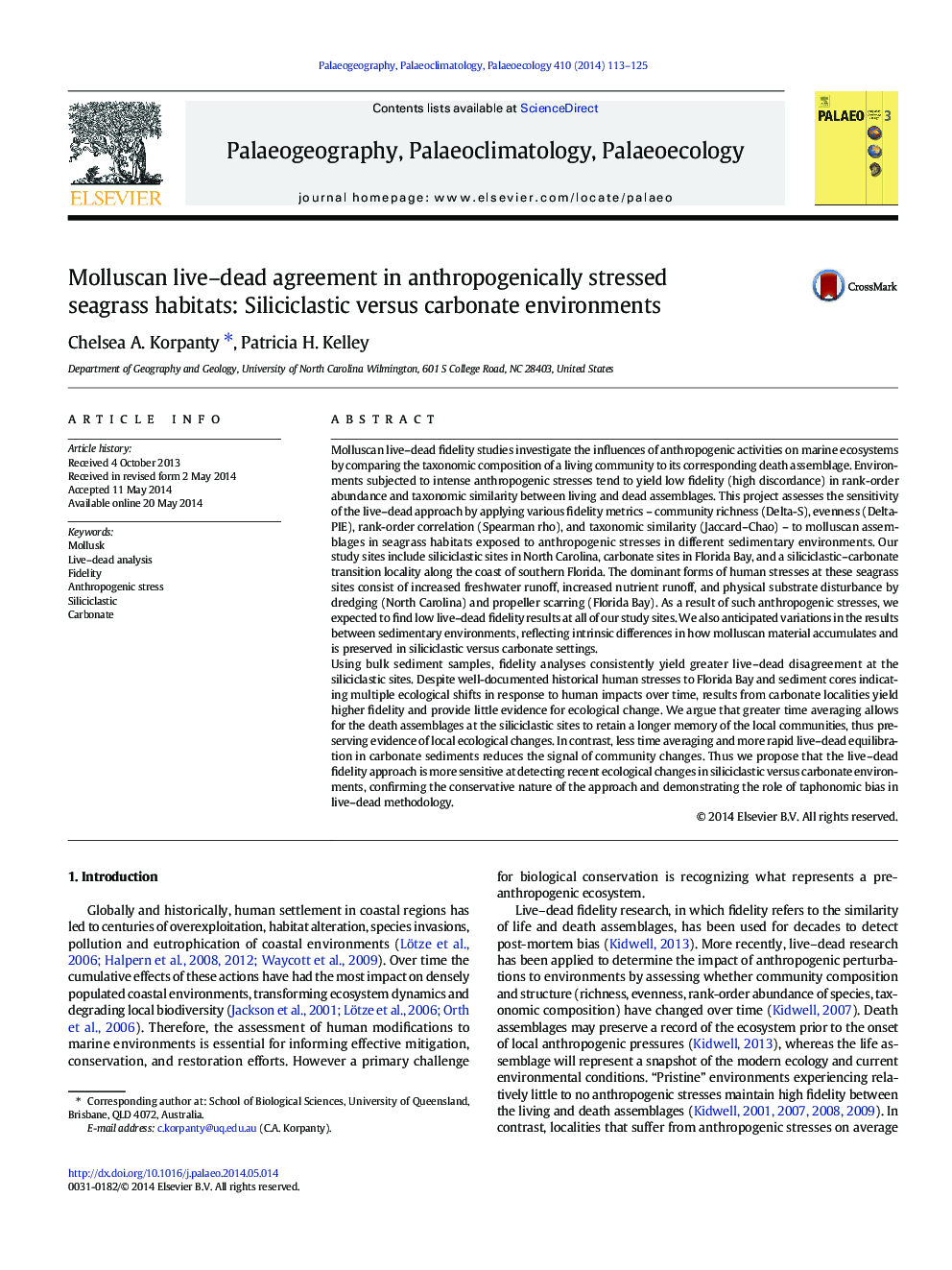| کد مقاله | کد نشریه | سال انتشار | مقاله انگلیسی | نسخه تمام متن |
|---|---|---|---|---|
| 4466112 | 1622180 | 2014 | 13 صفحه PDF | دانلود رایگان |
• Less time averaging at carbonate sites yields generally higher live–dead fidelity.
• Greater time averaging at siliciclastic sites retains a longer molluscan record.
• Carbonate death assemblages have equilibrated to the living communities.
• Siliciclastic death assemblages have not yet equilibrated to living communities.
• The live–dead approach is more sensitive to detecting change in siliciclastic settings.
Molluscan live–dead fidelity studies investigate the influences of anthropogenic activities on marine ecosystems by comparing the taxonomic composition of a living community to its corresponding death assemblage. Environments subjected to intense anthropogenic stresses tend to yield low fidelity (high discordance) in rank-order abundance and taxonomic similarity between living and dead assemblages. This project assesses the sensitivity of the live–dead approach by applying various fidelity metrics – community richness (Delta-S), evenness (Delta-PIE), rank-order correlation (Spearman rho), and taxonomic similarity (Jaccard–Chao) – to molluscan assemblages in seagrass habitats exposed to anthropogenic stresses in different sedimentary environments. Our study sites include siliciclastic sites in North Carolina, carbonate sites in Florida Bay, and a siliciclastic–carbonate transition locality along the coast of southern Florida. The dominant forms of human stresses at these seagrass sites consist of increased freshwater runoff, increased nutrient runoff, and physical substrate disturbance by dredging (North Carolina) and propeller scarring (Florida Bay). As a result of such anthropogenic stresses, we expected to find low live–dead fidelity results at all of our study sites. We also anticipated variations in the results between sedimentary environments, reflecting intrinsic differences in how molluscan material accumulates and is preserved in siliciclastic versus carbonate settings.Using bulk sediment samples, fidelity analyses consistently yield greater live–dead disagreement at the siliciclastic sites. Despite well-documented historical human stresses to Florida Bay and sediment cores indicating multiple ecological shifts in response to human impacts over time, results from carbonate localities yield higher fidelity and provide little evidence for ecological change. We argue that greater time averaging allows for the death assemblages at the siliciclastic sites to retain a longer memory of the local communities, thus preserving evidence of local ecological changes. In contrast, less time averaging and more rapid live–dead equilibration in carbonate sediments reduces the signal of community changes. Thus we propose that the live–dead fidelity approach is more sensitive at detecting recent ecological changes in siliciclastic versus carbonate environments, confirming the conservative nature of the approach and demonstrating the role of taphonomic bias in live–dead methodology.
Journal: Palaeogeography, Palaeoclimatology, Palaeoecology - Volume 410, 15 September 2014, Pages 113–125
